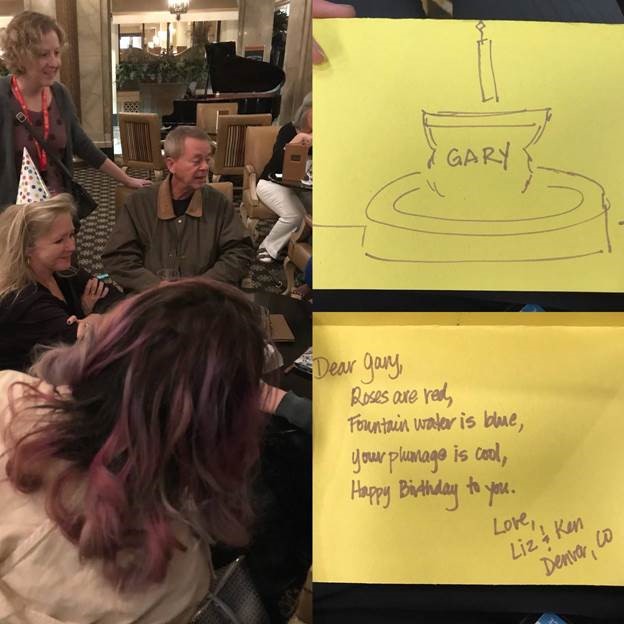What does hosting a birthday party for a hotel duck have to do with arts marketing?
Posted by Mar 15, 2018

Erika Juran
(Only the Cohort 1 attendees of #NAMPC 2017 know!)
As arts organizations, we collect stories of transforming individual lives; sometimes, we have stories of transforming communities. We also collect survey information with “numbers served” or assess the effect our programs and events have on our constituents. And we have hard data that show the arts have an economic impact and add public value to our schools. But storytelling is essential. We need to do this in a way that addresses current and future modes of communication. We must tell our stories to the world in an impactful way that reaches our current and/or new audiences. We must command increasingly fleeting moments of attention, Facebook algorithms, and new trends.
Nonprofit organizations are tasked to do much with little, all the while growing programs and reach, and always keeping the plates spinning. All too often, organizations give short shrift to marketing and communications, rather than making them an integral part of a strategic plan. But they are essential tactics that ensure we serve our mission and stay focused on vision. Professional development for nonprofit employees often is also an afterthought, rather than a part of strategic focus.
It was these factors, and a desire to shift my organization to be more marketing-minded, that led me to the Arts Marketing and Audience Engagement in the 21st Century initiative created by Americans for the Arts and funded by the Pennsylvania Council on the Arts.
I began my tenure as Executive Director of 35-year-old Perry County Council of the Arts one year ago. I knew it was vital that the importance of marketing in our organization be expressly supported by leadership, so one of the first (and smartest) decisions I made was to move our part-time media coordinator, Missy Smith, to a Communications Director role.
We applied and were selected to participate in the first cohort of the program, along with twelve other arts and culture organizations from the eastern part of Pennsylvania. The Cohort training requires engagement by an organization’s leader, paid or volunteer, and a marketing representative, whoever that may be. So together, Missy and I began our work with the training group in the fall of 2017. We were up for the challenge, and we have had invaluable arts marketing learning experiences since.
The experience of this training group has helped transform our organization as we reimagine our branding and marketing initiatives. We’ve also seen it in the other arts organizations that have participated in this group. We’ve received phone and in-person trainings, and attended last year’s National Arts Marketing Project Conference at the Peabody Hotel in Memphis (home of the famous Peabody Ducks referenced in the headline). The value of having, for the first time, a marketing plan cannot be understated. We have also adopted a brand identity guide that was co-created with our board, development committee, and entire staff team. In many ways, small and large, we are designing, re-designing, and assessing our organization as we focus on telling our story to the world.

Without this Cohort experience, it’s fair to say that we would have moved much slower in our marketing self-assessment and planning. The trainings, readings, exercises, workshops, and, most importantly, time with our fellow arts marketers have given us the tools we need to expand our organization’s reach and strengthen our strategies, and to share the broader message that the arts are vital to life.
Applications for the next cohort of the initiative are open through April 27, 2018! You can learn more and apply online—or nominate an organization you think could benefit from the program—on the National Arts Marketing Project website.





